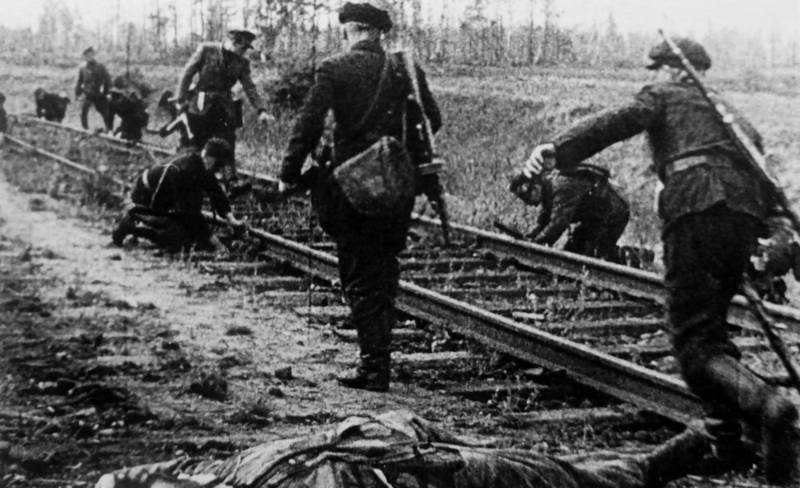"Rail War" of Soviet partisans in 1943

“Rail War” and “Concert” became the largest operations of the Bryansk partisans during the Great Patriotic War.
Many sources indicate that the “Rail War” was launched to support the Red Army operation on the Kursk Bulge. Meanwhile, some historians dispute this fact, since the Battle of Kursk lasted from July 5 to August 23, 1943. The partisan operation began on August 3 and lasted until September 15. In this case, the question arises as to why the destruction of German communications began so late.
At the same time, there is no doubt that the “Rail War” made a huge contribution to the Victory of the Red Army over the Nazi invaders.
It is worth noting that before the development of the operation began, there were two plans. The first was proposed by Colonel Ilya Grigorievich Starinov, one of the organizers of the partisan movement. In his opinion, it would be more expedient to destroy locomotives rather than rails. This damage will be much more difficult for the Germans to level out.
The second plan belonged to General Panteleimon Kondratievich Ponomarenko, the Chief of the Central Headquarters of the partisan movement. He believed that it was much more difficult to destroy locomotives than rails. Meanwhile, blowing up railway tracks will bring no less results than destroying trains, since the Germans have a shortage of rails.
After the war, many historians will write that Ponomarenko was mistaken and the Third Reich did not have any shortage of railway tracks. At the same time, Germany had a shortage of steam locomotives, which indicates that Starinov was right.
Be that as it may, the operation was developed on the basis of Ponomarenko’s plan. More than 100 thousand Soviet partisans took part in the “Rail War”, who carried out subversive activities on a front stretching about 1000 km.
According to some reports, from August 3 to September 15, 1943, about 215 thousand rails were destroyed, which undoubtedly created serious problems for the Wehrmacht.
- wrote the commander of the 559th German commandant’s office.
In addition, it was Operation Rail War, which then smoothly flowed into Concert, that showed the Soviet command that the partisan movement was a huge force.
However, the above-mentioned operation also had its disadvantages. Firstly, the order did not indicate which railway tracks needed to be destroyed. As a result, the partisans even blew up the railway track that the Wehrmacht did not use at all. According to historians, Operation Rail War caused more damage to the country's railway property than the Nazis did during their retreat.
Secondly, most of the important communications were carefully guarded by Wehrmacht units. As a result, to undermine them, the partisans often had to engage in battle, which led to large losses among movement participants.
Information